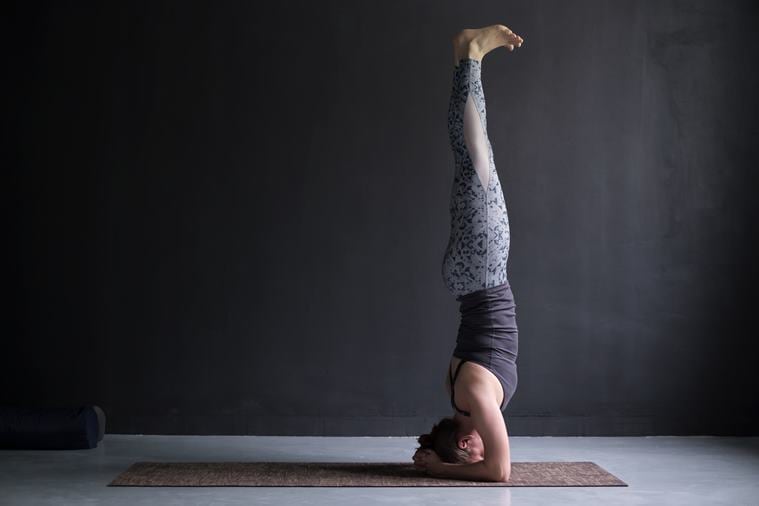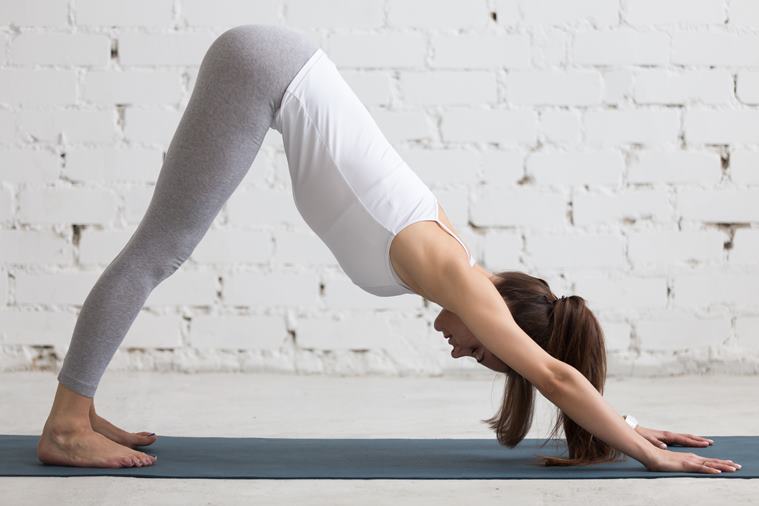Even celebrity nutritionist Rujuta Diwekar is all praises for this yoga posture.

Many people struggle with ageing, which in essence, is a natural process. But what if we told you that a yoga asana could help delay the process and make you feel younger? Yoga inversion exercises could be your go-to solution, as experts say that while turning upside down is what children love doing, it could be helpful for most adults as well. Inverted asanas, yoga inversions or headstands are known to reverse the action of gravitational force on the body such that the flow which is usually pulled towards the feet, moves towards the head. This reverse movement is believed to leave the practitioners with a refreshed and revitalised feeling as the seventh chakra or the sahasrara chakra, also called the crown chakra, is said to be energised.
From Balasana or child’s pose to Adho Mukha Vrksasana or handstand, upside down postures are an integral part of yoga exercises.
Sharing one of her yoga guru Karin O Banon’s advice, celebrity nutritionist Rujuta Diwekar recently said in an Instagram post that according to Banon, “all women must practice inversions daily after they turn 40”.
Diwekar, who is seen performing a wall T-stand posture in the video, stated, “Because most times, as women approach 40, they realise that they have spent a lifetime being good, obedient girls, but in the process, may have lost out on their true-selves. This, according to her, even reflected in their asana practice – being good with forward bends but fearful of inversions. Fearful of using their own inner strength (core strength) to hold themselves up against convention or conditioning (gravity in this case).”
She continued, “However, #Iyengaryoga has multiple ways to learn inversions, a step at a time. It might not give you the instant thrill of an upside – down, but teaches you how to engage which muscle. That way when you go against the norm or gravity, you are still safe, secure and graceful. Of course, you don’t have to wait to turn 40. The earlier you learn inversions, the better it is.”
ALSO READ | Menstrual cramps? These tips from nutritionist Rujuta Diwekar could provide relief
Why you should practice inversions

Headstands are said to improve brain function, upper body strength, detoxify the body, boost energy and stimulate the lymphatic system. The known psychological benefits of the exercise include confidence building, promoting relaxation and increased focus.
Who must not do it?
It is a must to practice the inversion asana under expert guidance. Since there are many modifications for inversions, it’s recommended to begin with the modified versions, especially with the more advanced poses, when you’re just starting out. Poses like Sarvangasana (shoulderstand) and sirsasana (headstand) can place a lot of pressure on the upper back and shoulders and need to be approached carefully. Props like a block, or a wall which is called Viparita Karani can help build the core and upper body strength which helps one to achieve balance until you are ready to do it without support.
However, anyone with neck, spine or head injuries needs to take extra caution when practising inversions as does anyone with high blood pressure (without being controlled by medication) or cardiovascular problems.
Its best to take time and precautions when practicing inversions. These include warming up properly, listening to your body and progressing slowly.
ALSO READ | Practice these yoga asanas in the morning for a healthy day ahead
If you are a beginner, here are a few inversions you can try under supervision.
Downward Facing Dog (Adho Mukha Svanasana)

*Stand on four limbs, such that your body forms a table-like structure.
*Exhale and gently lift your hips and straighten your elbows and knees. You need to ensure your body forms an inverted ‘v’.
*Your hands should be in line with your shoulders, and your feet in line with your hips. Make sure that your toes point outwards.
*Now, press your hands into the ground and lengthen your neck. Your ears should touch your inner arms, and you should turn your gaze to your navel.
*Hold for a few seconds, and then, bend your knees and return to the table position.
Tip: Spread your fingers really wide, so you’re not exerting too much pressure on your wrists. Engage your shoulders, and draw your belly button toward your spine to activate your core.
Dolphin Pose (Ardha Pincha Mayurasana)
Ardha Pincha Mayurasana strengthens the shoulders and the core, and doing a couple of reps of walking inward and outward into this “V” shape will give your entire body a great workout.
*Start the asana by getting down on your knees and hands.
*Keep your forearms on the floor; ensure that your elbows and shoulders are in the parallel line.
*Now raise your spine (back) and buttocks as you tuck your toes and keep your legs straight.
*Make sure your shoulder blades should be firm and into your ribs. Now release your neck by raising your shoulders away from ears.
*Then walk in towards your arms.
*At that point take four to six deep breaths. Take three long and deep breaths and hold the position for 30 to 60 seconds.
Source: Read Full Article
